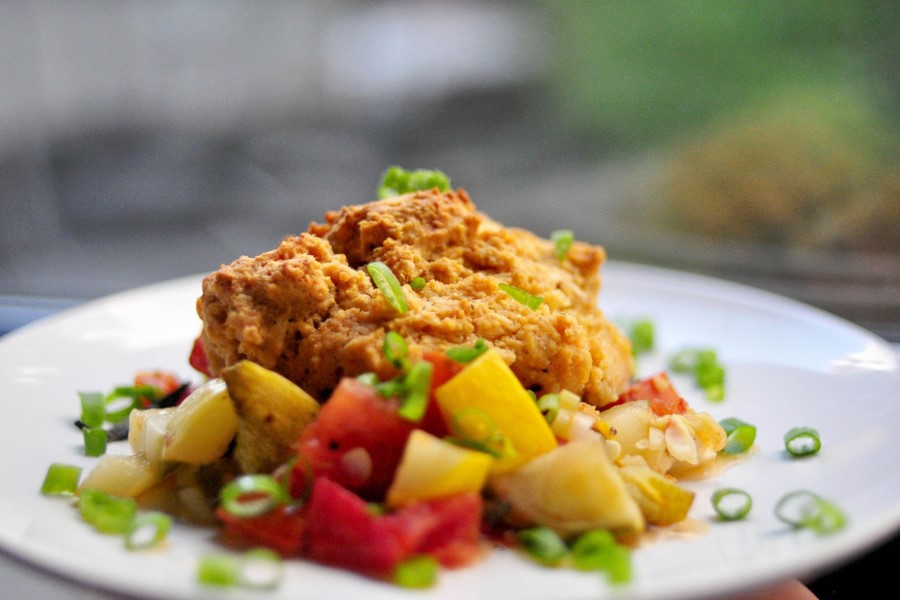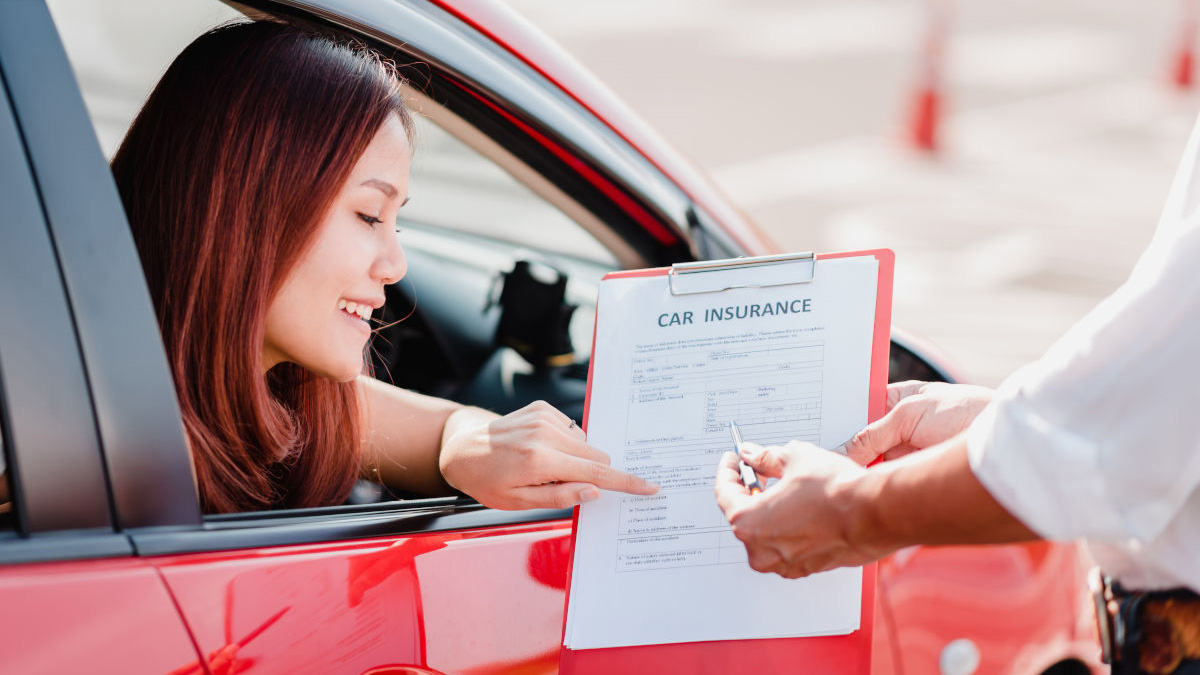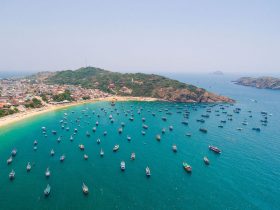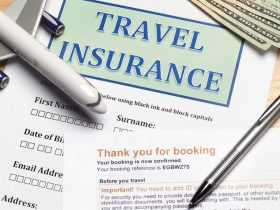Most people don’t know how to eat cheap when they travel.
But, here’s the thing:
After reading this guide, you’ll not only know how to eat cheap and save money on food, but you’ll also know how to eat safe and well!
The best part?
This isn’t difficult! And, you don’t have to sacrifice quality either.
Keep reading!
Travel gives us the freedom to try new experiences and to focus on aspects of life that are most important to us. And one aspect of life – and travel, in particular – that shouldn’t be glossed over is food.
I love to eat (who doesn’t) and eating around the world is one of my absolute favorite things about travel.
Food is often such an integral part of a country’s identity and culture that to skip out on it is doing yourself a huge disservice.
Who would choose to miss out on pasta and ice cream in Italy? Or pizza in New York? What about paella in Spain, fish, and chips in the UK, ramen in Japan, or tacos from Mexico?
But, there is one legitimate concern when it comes to eating well on the road, and that is the price.
Eating out is expensive, right? Don’t most backpackers cook all their own meals in their hostel kitchen and skimp by on instant noodles and McDonald’s?
While eating out can be expensive, it doesn’t have to be. And as for typical backpacker eating habits, the statement above just isn’t true (at least not for everyone). Although instant noodles may be the cheapest food to live on, I’m going to teach you how to save money on food without cooking a thing!
I may not eat out all the time when I travel (we’ll talk more about cooking for yourself later), but I do quite often and when I do, I know how to not break my bank in the process.
This guide is to help teach you this process!
HOW TO EAT CHEAP, SAFE, AND HEALTHY
Another common misconception when it comes to eating cheap on the road usually involves people thinking that in order to eat on the road, you have to sacrifice your health (and also endure traveler’s diarrhea all-too-often).
Again, this isn’t true.
In this section, I’m going to show you, not only how to eat cheaply, but also how to eat safely and well.
HOW TO EAT CHEAP
RESEARCH
Before setting off on your trip, do some digging and find the different restaurants or food options that are available.
Plan how many times per day you hope to eat out and always remember to make a travel budget and track your expenses. This way, you can set more money aside for food if that’s what’s important to you and you’ll also know when you need to cut back.
Remember, cheap doesn’t equal disgusting! In fact, some of the best food experiences you can have when you travel, turn out to be the cheapest and the most culturally authentic.
AVOID BECOMING “HANGRY”
Do you know that psychotic state people enter when they become too hungry?
Well, this can be a problem – in more ways than one – when you’re on the road.
If you wait until you reach this painful stage of hunger, you’ll be far more likely to just eat at the first place you stumble upon, without even bothering to scout it out and look at the prices.
Instead, decide on a time of day that you’re going to eat, and give yourself time to find an ideal place. Also, when eating your meal, fill yourself up. Eat enough to last you, at least until your next meal so you don’t need to worry about getting hangry at any point of the day.
AVOID SNACKING
While we’re on the topic of filling yourself up at mealtimes, I thought I’d touch on snacking real quick.
It’s very easy to lose track of how much you spend on snacks because they never cost that much on their own! Having the odd chocolate bar or the odd ice cream may not seem like a lot at the time, but these expenses will add up over time and could put a reasonably sized hole in your travel budget.
*All the more reason to track your spending.
If you’re the kind of person who enjoys snacking (I can certainly be guilty of this on occasion), keep track of every snack expense over the course of a month. Then work out the total cost. The result may shock you into snacking less!
The key is just to eat filling meals. This eliminates any temptation to snack in the first place.
STICK TO WATER
Fizzy drinks (soda) are usually very expensive at restaurants. I also drink a lot, so I would go through two or three of these every meal. By sticking to water, you could easily save yourself $5-10 per day. Over the course of a month, that’s a couple hundred (at least)!
Stick to H2O people! Your teeth will thank you, too!
*Note on alcohol: Alcohol and travel often go hand in hand and, just like I love trying a country’s food, I also love trying out the local beer (or whatever other alcohol the place is known for). So, if you’re a keen drinker, don’t go stone-cold sober for the length of your trip! If anything, it might be worth creating an alcohol budget, separate from your food budget.
GET A REFILLABLE WATER BOTTLE
So, you’ve decided to stick to water; good for you!
However, buying bottles of water raises a couple more issues:
- Buying a plastic bottle every time you’re thirsty is very damaging to the environment.
- Also, these plastic bottles also cost (it’s not like they’re free). You could easily end up spending a few bucks every day on bottled water (maybe more in countries where bottled water is hella expensive). Say over the course of a month, that’s still over $50-100 spent just on water!
Instead, invest in a refillable water bottle and bring it everywhere with you. You’ll often be fine getting your water out of the tap but some countries (developing countries mainly) don’t have safe tap water. If you’re in a country where this is the case, you could also get your hands on a filter or you can try these two neat little tricks:
- When you arrive at your destination, head out to the local store and get a couple of massive water containers (I’m talking at least 5 liters), store them at your accommodation, and essentially use them like you would a tap.
- Alternatively, you can fill a kettle up with tap water and boil it. This will sterilize the water and will be safe to drink. To enjoy it cold, just leave it in the fridge for a while.
FIND DISCOUNTS
If your accommodation offers free breakfast, take it! Bonus tip: fill up as much as possible so you won’t need to spend as much on lunch and dinner!
You may also find that some restaurants offer special deals at lunchtime. You’ll be able to get a full meal at a fraction of the cost compared to what you would pay for dinner. Keep an eye out for these places (these deals are very common in Europe).
Another way to get cheap meals on a budget and find discounts at restaurants is to get a tourism card like the iAmsterdam pass, for example. People often just think of these as ways to save money on public transport but many of them offer discounts at selected restaurants.
HAPPY HOUR
I thought this form of discount deserved its own point, altogether!
You’d be surprised how many countries do happy hours.
They’re almost always later on in the day, so make use of them to get a cheap dinner.
A common deal you’ll find is getting free food with your first drink of the evening.
Sound like a pretty sweet deal to me!
LEARN THE TIPPING CULTURE
You don’t want to hand out extra money if you don’t need to, right?
Each country has different customs and attitudes when it comes to tipping. Some tip more than others. Some don’t tip at all.
This is a good thing to find out before you travel. This will teach you two valuable pieces of information:
- How to not spend more money on tipping than you need to.
- How to avoid offending anyone.
Everybody’s happy!
INTERMITTENT FASTING
Something I’ve been experimenting with recently is intermittent fasting.
And while almost all the reasons people do this are health-related, it can also be a lot easier on your wallet too.
I’m now eating two meals per day instead of three so if you apply this method on the road, you’ll theoretically free up a third of your food budget!
I don’t recommend trying this out unless you’ve researched it first to see that it’s right for you. So, if you want to learn more, read this complete guide by Steve Kamb over at Nerd Fitness.
DUMPSTER DIVING
While dumpster diving used to be looked at, purely as a taboo practice, it has slowly worked its way towards being acceptable and has even become a trend in the backpacking community.
What’s better than cheap food?
Free food.
Also, while it may sound vile and disgusting, there are actually plenty of gems to be found in bins and dumpsters all around the world.
A WORD ON EATING SAFE AND HEALTHY
In the entire previous section, I did not, once, mention instant noodles, tins of beans, or McDonald’s. So hopefully, you’re beginning to see how to eat super cheap without succumbing to these backpacker stereotypes!
As long as you follow the tips in this guide – and aren’t a complete idiot with your money – you can be pretty much as healthy as you want to be!
A bigger concern many beginner backpackers have is the safety of the food they’re eating.
If you’ve traveled for any length of time before, chances are you’ve gotten sick from eating something you probably shouldn’t have. We’ve all been there. It’s just part of the process. That being said, there are several ways in which you can ensure that your food is safe and good to eat:
- Street food is okay – Lots of backpackers avoid street food like the plague because they think it’s all unsafe and will make them ill. This is not only not true, but street food often showcases the best of a country’s cuisine so you’re really missing out if you choose to avoid this. Just have common sense about it. Look at the food itself and how it’s being prepared. Check to see how many people are eating from the stall. This brings me to the next point…
- Ask the locals – There’s no better info than that gathered from locals. They know the best places to eat, what food is safe and what you should avoid.
- Follow the locals – Locals know the best (and safest) spots to eat so if you stumble across a street vendor and it’s packed with people, you can safely assume the food’s good to eat.
- Eat when locals eat – This is when food is going to be at its freshest, safest, and most delicious.
- Read reviews on TripAdvisor and Yelp.
- Mostly stick to fruits you can peel.
CHEAP PLACES TO EAT
We’ve covered how to eat cheaply but you might still be wondering where exactly the best places to eat cheap are. Here are some of the best suggestions…
STREET FOOD
If you visit countries like Thailand, you will find the streets littered with food stalls, selling delicious meals on the cheap.
Grab a delicious bowl of noodles and a beer for just a couple of dollars!
Street food is honestly the best food in the world!
Not only is it incredibly cheap, but it’s also a great way to experience the local cuisine – in, probably, the most culturally authentic way possible.
OUTDOOR VENDORS
Similar to street food, outdoor vendors – like hot dog stands, for example – are great places to get a cheap and filling meal on the go.
Although you won’t find this to be as culturally authentic as street food, these vendors will still fill you up on the cheap.
An example of one of these outdoor vendors is “FEBO” in Amsterdam.
FAST FOOD
If all else fails, fast food is always there as a last resort option!
Less culturally authentic. Less healthy. And a lot more boring.
That being said, if you are in a more expensive part of the world (like many places in Europe), you will struggle to find cheaper and more convenient food than the local McDonald’s or KFC.
Just satisfy your stomach, and worry about the health implications later!
SUPERMARKETS/GROCERY STORES
Unfortunately, we can’t eat out every day of the week! That’s when supermarkets (grocery stores) become super useful.
If you have the means, it never hurts to cook your own meals on occasion as this is still often the cheapest way to eat when traveling.
Just head to the local store, stock up on some local ingredients and cook yourself a local meal. If you’re a halfway decent chef, it will feel like you’re eating out.
I also love local supermarkets because they give you great insight into what and how the locals eat.
So, even when you’re not eating out and sampling the area’s street food, you can still eat like a local.
EAT LIKE A LOCAL
Local food will almost always be cheaper than imported stuff. Just remember that you’ll usually save more by eating locally.
I admit, it can be nice to go out for a fancy meal every now and then; maybe order a couple of cocktails! And the truth is, if you learn how to travel cheap, this will be entirely possible to do on occasion.
By learning how to backpack on a budget and eat cheap on the road, following the steps laid out in this guide – and yes, sometimes cooking for yourself – you will not only be able to eat out more, but you’ll also be able to prolong your trip and think about long-term travel as a legitimate option.
Also, what’s the craziest food you’ve eaten during your travels? Comment below.







Leave a Reply